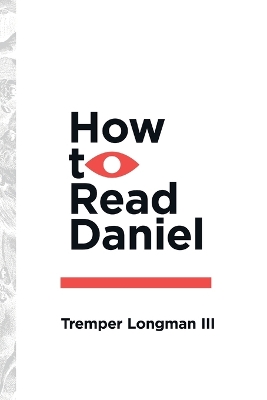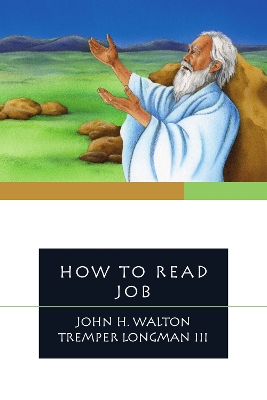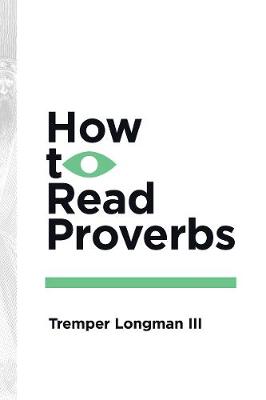How To Read
4 total works
Beyond the familiar lions' den and fiery furnace, much of the book of Daniel seems baffling to modern readers. The first half recounts stories full of ancient Near Eastern protocol and imperial court drama; the second half features apocalyptic visions of monstrous beasts and cosmic conflict. Many Christians misunderstand or simply avoid the book. But failing to read Daniel well means missing a critical part of God's message to us.
According to Tremper Longman III, when we read Daniel on its own terms and in its original context, we'll discover that all of the book is easier to understand than we might think. In this volume of the popular How to Read Series, Longman brings his expertise as an Old Testament scholar and teacher to orient readers to a proper engagement with Daniel. He examines the book's genre, structure, historical background, and major theological message before diving deeper into each of the stories and visions.
As we learn how to enter the world of Daniel, we find a message not only for his generation but also for ours: even in hostile circumstances, God is in control, and he will have the final victory. Longman draws out this theme of Daniel for the twenty-first century, finding help for faithful living in a toxic culture and hope in a troubled world. How to Read Daniel is the perfect starting point for anyone studying, teaching, or seeking a reliable guide to this ancient book.
According to Tremper Longman III, when we read Daniel on its own terms and in its original context, we'll discover that all of the book is easier to understand than we might think. In this volume of the popular How to Read Series, Longman brings his expertise as an Old Testament scholar and teacher to orient readers to a proper engagement with Daniel. He examines the book's genre, structure, historical background, and major theological message before diving deeper into each of the stories and visions.
As we learn how to enter the world of Daniel, we find a message not only for his generation but also for ours: even in hostile circumstances, God is in control, and he will have the final victory. Longman draws out this theme of Daniel for the twenty-first century, finding help for faithful living in a toxic culture and hope in a troubled world. How to Read Daniel is the perfect starting point for anyone studying, teaching, or seeking a reliable guide to this ancient book.
The Psalms possess an enduring fascination for us. For frankness, directness, intensity and intimacy, they are unrivaled in all of Scripture. Somehow the psalmists seem to have anticipated all our awe, desires and frustrations. No wonder Christians have used the Psalms in worship from the earliest times to the present.
Yet the Psalms cause us difficulties when we look at them closely. Their poetry is unfamiliar in form. Many images they use are foreign to us today. And the psalmists sometimes express thoughts that seem unworthy of Scripture.
Tremper Longman gives us the kind of help we need to overcome the distance between the psalmists' world and ours. He explains the various kinds of psalms, the way they were used in Hebrew worship and their relationship to the rest of the Old Testament. Then he looks at how Christians can appropriate their message and insights today. Turning to the art of Old Testament poetry, he explains the use of parallelism and imagery.
Step-by-step suggestions for interpretating the psalms on our own are followed by exercises for further study and reflection. Also included is a helpful guide to commentaries on the Psalms.
Here is a book for all those who long to better understand these mirrors of the soul.
Yet the Psalms cause us difficulties when we look at them closely. Their poetry is unfamiliar in form. Many images they use are foreign to us today. And the psalmists sometimes express thoughts that seem unworthy of Scripture.
Tremper Longman gives us the kind of help we need to overcome the distance between the psalmists' world and ours. He explains the various kinds of psalms, the way they were used in Hebrew worship and their relationship to the rest of the Old Testament. Then he looks at how Christians can appropriate their message and insights today. Turning to the art of Old Testament poetry, he explains the use of parallelism and imagery.
Step-by-step suggestions for interpretating the psalms on our own are followed by exercises for further study and reflection. Also included is a helpful guide to commentaries on the Psalms.
Here is a book for all those who long to better understand these mirrors of the soul.
Preaching's Survey of Bibles and Bible Reference
We often turn to the book of Job when we encounter suffering. We look for an explanation for the questions "Why me?" or "Why her?" But what if it turns out that although Job does suffer, the book is not really about his suffering?
If ever a book needed a "How to Read" instruction manual, it is the book of Job. And when two respected Old Testament scholars team up-both of whom have written commentaries on Job-we have a matchless guide to reading and appreciating the book. From their analysis of its place in the wisdom literature of the Bible and the ancient Near East to their discussions of its literary features and relationship to history, Walton and Longman give us the best of their expertise. They explore the theology of Job, placing it within Israelite religion and Old Testament theology. And they coach us in how to read Job as Christians. When it turns out the book is not what we thought it was, our reading is richly layered and more satisfying.
Whether you are preparing for preaching, teaching, leading a Bible study, studying for a class or for personal enrichment, How to Read Job is your starting point.



